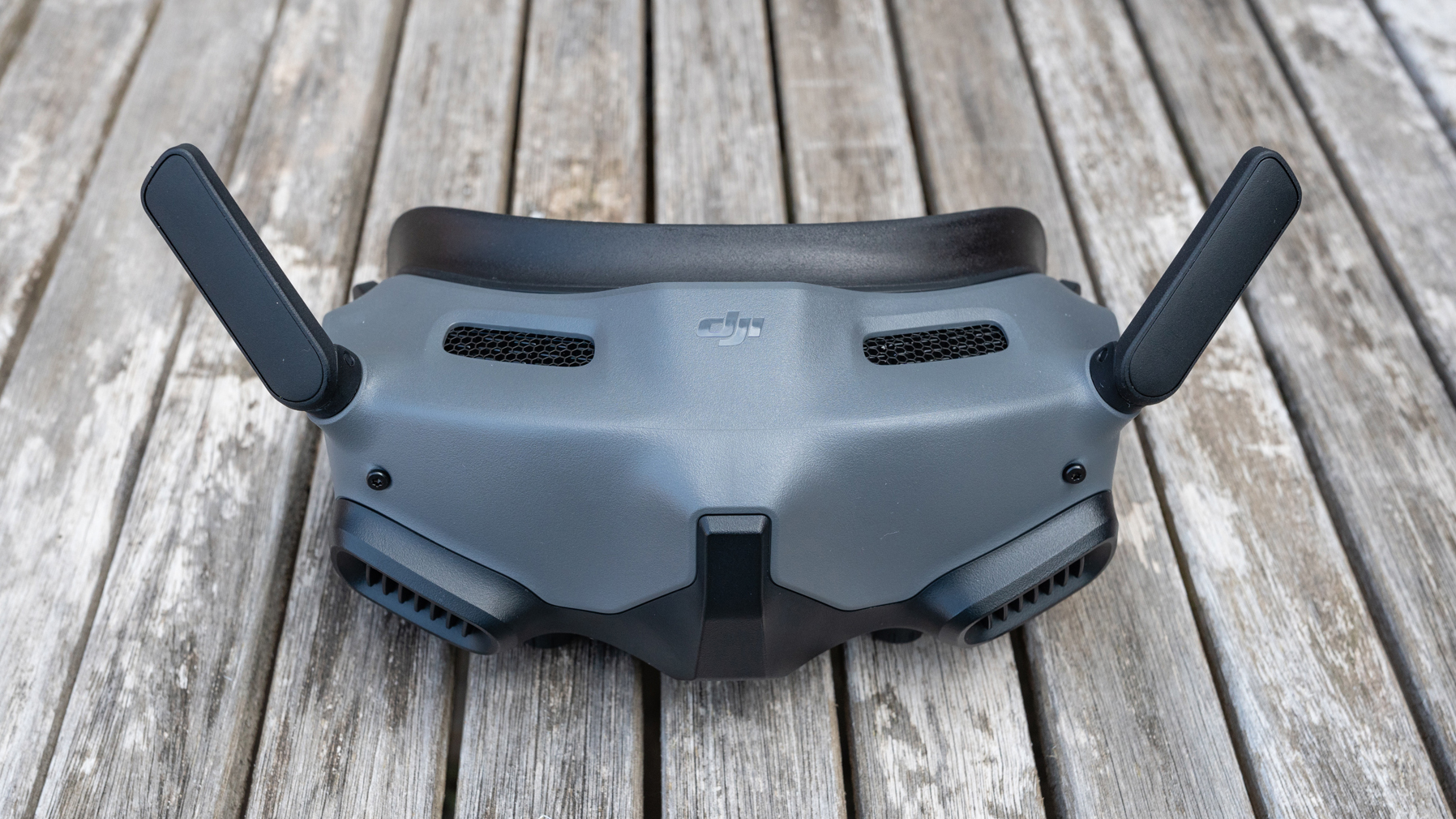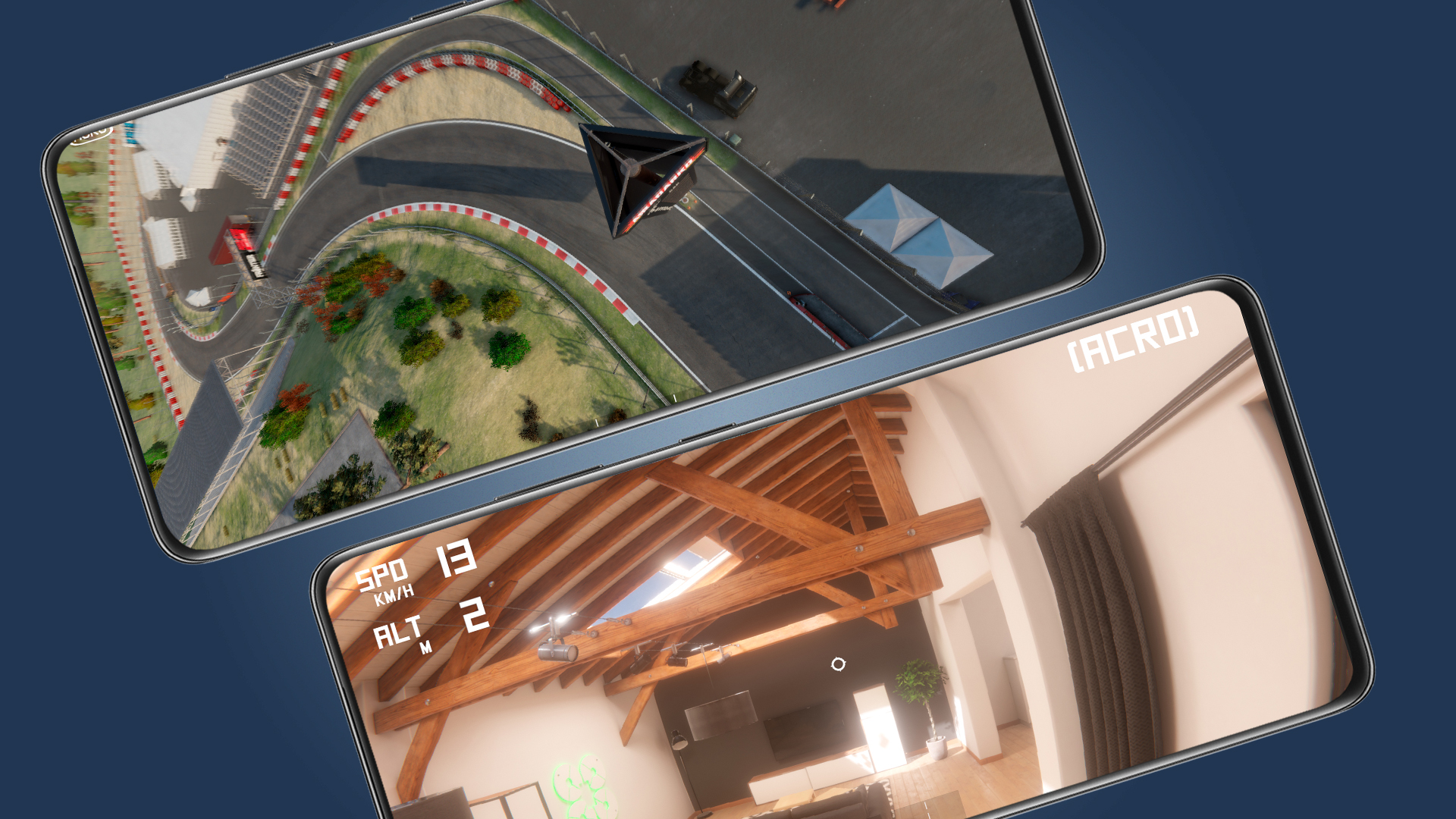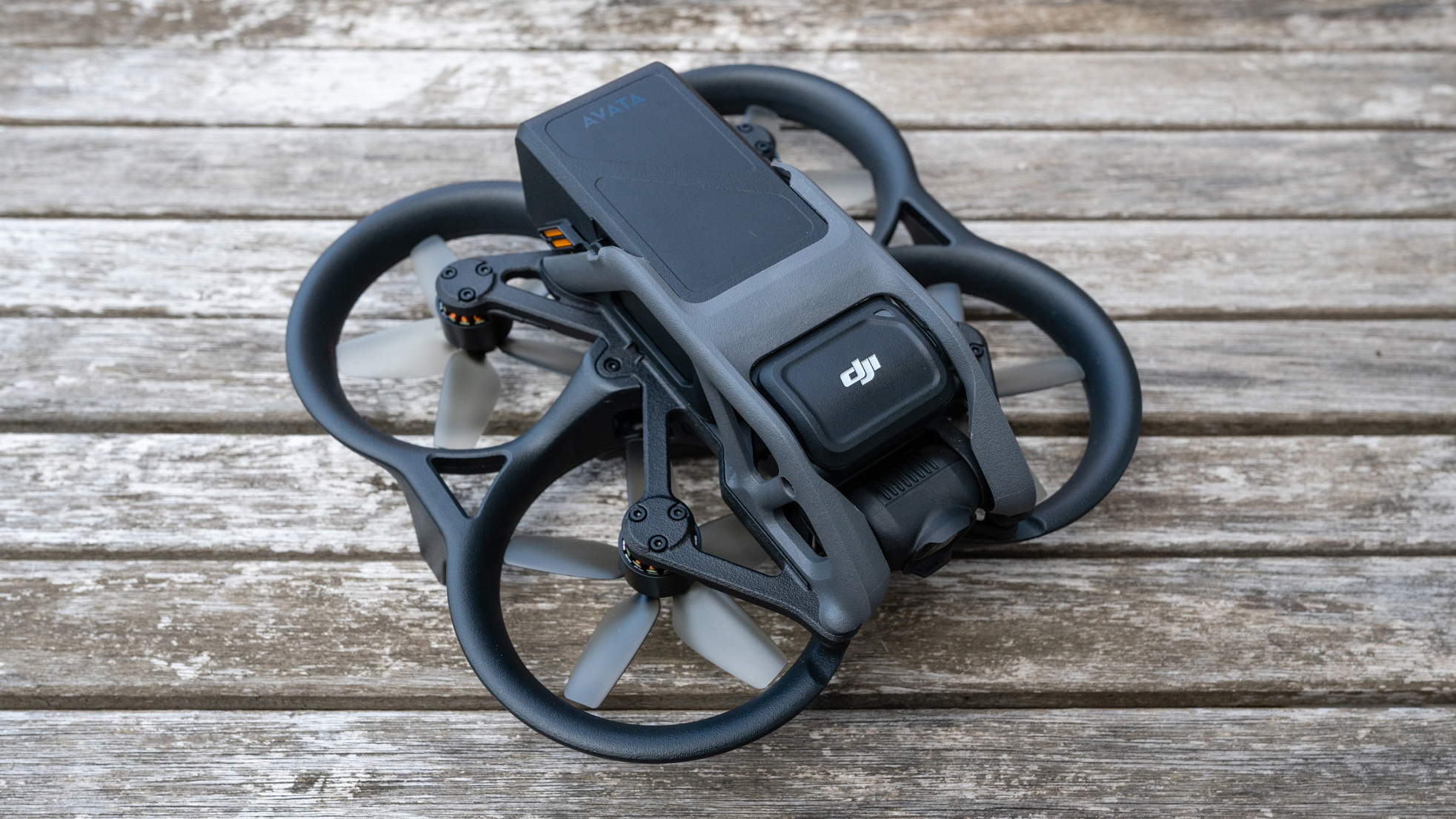Flying the DJI Avata is a lot harder than it looks in the drone's trailers
FPV drones are fun, the DJI Avata still has a steep learning curve

DJI has opened up drones to a whole new audience. And its latest model, the DJI Avata, has once again taken a complex form of flying camera – the FPV (or first-person view) drone – and made it approachable for beginners. But does this mean the DJI Avata is right for you? After spending several hours with it, I still think it has a steep learning curve that potential buyers should be aware of.
What is an FPV drone? They differ from standard flying cameras like the DJI Mini 3 Pro by giving their headset-wearing pilots an on-board view from the drone. This brings benefits (more precise flying, an immersive flying experience), but also challenges like latency issues and complex controls. The DJI Avata is a so-called 'cinewhoop' drone, which is an FPV sub-genre that's focused more on shooting cinematic videos than racing.
Thanks to the inclusion of GPS and downward-facing sensors, the Avata is pretty versatile flying machine. When flying in Normal and Sport modes, it can behave like a standard camera drone that’s pretty easy to fly. But its main skill is shooting FPV-style videos where the camera is locked on the horizontal axis, which helps it capture immersive footage that makes the pilot (and viewer) almost feel like they’re flying.
For those with a bit more experience, the Avata can also be flown in Manual (or 'Acro') mode. It's this mode that unleashes true FPV flight. But only if you know how to use this extremely strange and difficult-to-learn flight mode.

Unfortunately, this isn't possible if you're starting from scratch, as the two Avata kits only come with DJI’s supposedly beginner-friendly Motion Controller, which works using gestures like tilting the controller to turn, ascend and descend.
To fly in 'acro' mode, you'll need to buy the DJI FPV Controller 2 separately. But whichever controller you go for, expect to put in a lot of hours before you can start thinking about shooting cinematic FPV videos like the ones in DJI's promos.
Shifting into manual
You’ve probably seen DJI’s slick marketing videos for the Avata that have been gracing social media recently, like the one below.
Sign up for breaking news, reviews, opinion, top tech deals, and more.
In these, drone pilots take control of the Avata in stunning locations around the world using the Motion Controller and the accompanying footage looks wonderful. But peppered throughout, there are clips that could only have been captured by an expert FPV pilot, using the FPV Controller 2, and flying in Manual mode.
This juxtaposition of footage captured with the motion controller in ‘standard’ flight modes set against footage captured using the FPV Controller 2 and flying in Manual mode creates the illusion that what you’re seeing is easily achievable.
Unfortunately, this isn’t the case with the two Avata kits available. And even if you did purchase the FPV Controller 2 separately to be able to fly in Acro mode, it takes many hours of practice to even learn how to keep the drone in the air, let alone fly freestyle like the professionals.
We have lift-off
FPV drones are all about capturing immersive first-person view videos where the drone is expertly piloted through the tightest spaces with rolls, dives and flips that are made possible by shooting in Manual or Acro mode.
This mode is the holy grail of FPV, and is the only way that you can take full advantage of what these fast and nimble drones are capable of. Experts say that you need at least 50 hours of FPV flight experience between simulators and real drones just to become fairly competent in Acro mode.

I’ve just begun my own journey into flying FPV drones and have around 10 hours of flying experience in Acro mode. This is divided between two computer simulators, which can be controlled using an FPV controller plugged into my computer, and real-life flying experience using a beginner’s micro FPV drone kit.
DJI also has its DJI Virtual Flight iOS app, but as I'm on Android I’ve continued to practice FPV flight with Liftoff and Liftoff: Micro Drones through Steam (above).
Quality control
FPV controls are so different to normal camera drones that the learning curve for most people is incredibly steep.
With a standard camera drone, the left throttle stick simply moves the drone up or down and allows you to rotate, while the right stick pitches the drone backwards or forwards to move in those directions. The left and right movements of the right stick, meanwhile, make the drone roll/fly in these directions.
FPV controls do the same things, but where a standard camera drone will always stop, level itself and hover using GPS positioning when the controls are released, an FPV drone will crash if the controls are released in Acro mode.
Plus, the left throttle stick has no vertical centering mechanism, so you have to regulate the throttle, and the pitch and yaw of the right stick aren’t locked at an angle, which allows you to flip and roll the drone.

You also have to manually level the drone using the right stick, which takes a lot of getting used to, otherwise the drone remains pitched or rolled in the last input direction and will crash.
Of course, it’s these strange controls that allow for the acrobatic flight FPV drones are renowned for. Sound complicated? It is, and I can say from experience that you really do have to put the flying hours in with simulators and basic beginner FPV models before even thinking about flying a drone like the Avata in Acro mode.
Flying start
Still, DJI's new contender isn't anywhere near as complex as most FPV drones. As our DJI Avata review discovered, it's a ready-to-fly kit that’s incredibly easy to set up and fly. And some key parts like the Upper Frame ($19 / £19, above) and Propellor Guard ($25 / £25) are available for simple home repairs if needed.
Also, whereas traditional FPV drones use standard LiPo batteries that are volatile, and require careful charging and manual discharging, the Avata uses smart batteries that completely remove this daunting and far from risk-free process.
This, alongside its ability to fly like a standard camera drone with some FPV credentials, make it a hugely compelling model for those looking for an easy FPV experience alongside those with the skills, and indeed the nerve, to push the Avata to its limits.

But despite its all-in-one simplicity, the Avata is far from a flawless FPV experience with its slightly confused identity and the steep learning curve required to truly experience what it’s capable of.
The other question you need to ask yourself is whether you need to buy the Avata to experience basic FPV flying if you never intend to learn how to fly in Acro mode?
Standard DJI camera drone gimbals can be locked on the horizontal axis for capturing immersive FPV video. So while you wouldn’t have the goggles for an FPV flight experience, you can still achieve a similar style of video with the standard camera drone that you already own.
However, if you do have the budget for an Avata and don't need some of the benefits offered by the mainstream models in our best drones guide, it is undoubtedly a lot of fun, regardless of how you intend to fly it.

James Abbott is a professional photographer and freelance photography journalist. He contributes articles about photography, cameras and drones to a wide range of magazines and websites where he applies a wealth of experience to testing the latest photographic tech. James is also the author of ‘The Digital Darkroom: The Definitive Guide to Photo Editing’.